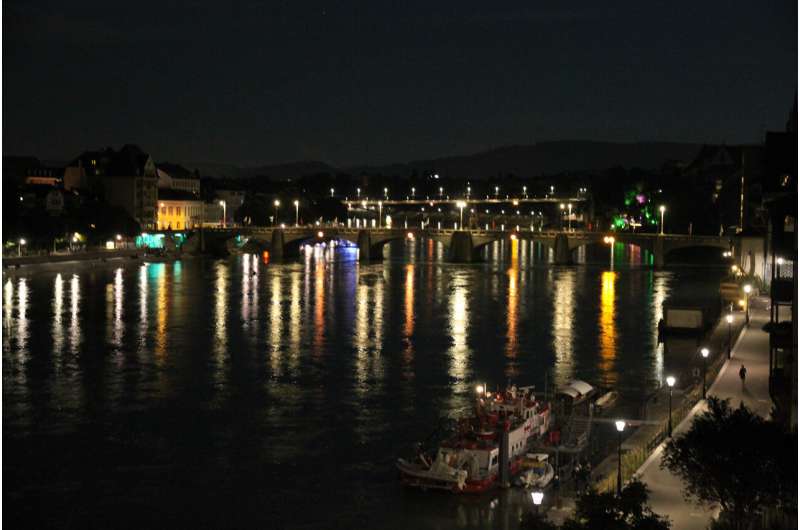Aquatic insects are sensitive to light pollution

Light pollution—too much artificial light in the wrong place at the wrong time is one reason for the decline in insect numbers worldwide. New research from the Leibniz Institute of Freshwater Ecology and Inland Fisheries (IGB) shows that current strategies for reducing the impact of light pollution do not go far enough in protecting aquatic insect species.
Most people are familiar with the sight of insects swarming around a streetlight at night. This well-known phenomenon shows one of the most severe ecological effects of artificial light at night—disruption of nocturnal insect location and behavior. Such is the attraction of artificial light to nocturnal insects, that the light acts like a "vaccuum cleaner," drawing insects away from their regular habitat and out of their usual behavioral cycles. The effect not only disrupts the insects' behavior and distribution, but has knock-on effects on the ecosystems in which they play a vital part. For example, nocturnal insects play an important role as pollinators. The recent German "Insect Protection Act" (Federal Nature Conservation Act) has anchored the implementation of insect-friendly lighting as a crucial strategy for biodiversity protection.
Insects and larvae are also attracted to light under water
In numerous studies, Dr. Franz Hölker's team has been able to show the influence of artificial light on flying and ground-dwelling insects. Now the researchers have investigated the effect on aquatic insects and insect larvae. Inland waters are particularly affected by light pollution as the shores of rivers and lakes are often densely built-up and brightly lit at night.
To study the effect, the researchers had to go where it is still really dark at night. In the Westhavelland Star Park near Berlin, they set up underwater traps for insects in water ditches and installed lights at different wavelengths. "In the illuminated water areas we found significantly more insects in the traps than in the unlit ones. This demonstrates that the vacuum cleaner effect of artificial light is felt even under water. Affected insects are impaired in their search for food and mates and become easier prey for predatory species," Franz Hölker explained the result of the field study.
Land and water insects: Not on the same wavelength
Many flying insects are particularly sensitive to short-wave, blue light and, as such, campaigns to protect insects against light pollution have focussed on reducing blue light wavelengths in streetlamps. However, the researchers found that aquatic insects don't exhibit this preference, and as such current blue-light mitigation strategies may not be enough. "Most species of aquatic insects seem to be attracted to long-wave light rather than short-wave light," explained Franz Hölker.
Light conditions in water are not the same as on land. The water body acts like an optical filter, altering the light spectrum and intensity. For example, if there is organic material in the water and it becomes more turbid. Short-wave, blue light in particular is attenuated as the distance from the light source increases.
"For the protection of flying insects, we recommend reducing the blue fraction of the light, but this does not help aquatic insects according to our study. Therefore, it would certainly make sense for lighting at water bodies to focus on alternative conservation measures—for example, to generally avoid direct lighting of water surfaces, and to reduce the intensity and duration of lighting in areas close to water bodies," Franz Hölker summarized.
More information: Impact of Different Wavelengths of Artificial Light at Night on Phototaxis in Aquatic Insects, Integrative and Comparative Biology, 2021; icab149, doi.org/10.1093/icb/icab149
Provided by Forschungsverbund Berlin e.V. (FVB)



















